Although different cultures have varying responsibilities and expectations for the male and the female sexes within the society, the sexual and reproductive health of both sexes is equally as important.
Notably so, because as humans, we are all sexual beings and our body structures – either as a male sex or female sex – is a determinant of the way we respond to the duties assigned to us by society, the contributions we make and how we adapt for growth and development.
Hence, been healthy in the other bodily system and diseased in the reproductive system still equals lack of overall good health. Since WHO defines Health as “a state of complete physical, mental and social well-being and not merely the absence of disease or infirmity”.
Reproductive health involves taking care of our body, sexual organs and reproductive system for sexual and reproduction purposes.
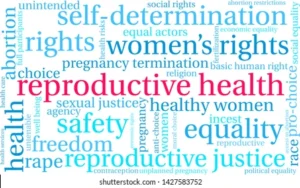
Anatomy of the Human Reproductive system
Our reproductive system ensures the continuation of life. However, what majorly differentiates this system from other systems in the body (e.g. urinary, cardiovascular, respiratory etc) is that the other bodily systems are for survival in an individual, while the reproductive system is not necessary for survival but for procreation.
Hence, the function of the reproductive system include:
- Production of egg in females and sperm in male
- Transportation and maintenance of egg and sperm
- Nurturing of developing offspring
- Secretion of male and female hormones.
Also, the reproduction system is divided into 2 board parts: the internal reproductive organs and the external reproductive organs.
In the Male, they have the primary sex organs and accessory organs. Their primary sex organs include the testis and gonad, while their accessory sex organs are the seminal vesicles, prostate gland, urethra and penis. However, of these, their external genital organs are the scrotum, penis and urethra. While the remaining sex organs constitute the internal genitalia.
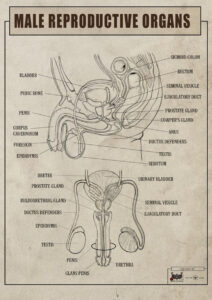
Notably, the gametogenic function of the testis aids in the stages of spermatogenesis, proliferation, growth, maturation and transformations. Likewise, hormones involved (directly and indirectly) in spermatogenesis include; Follicle stimulating hormone, Testosterone, Luteinizing hormone, Oestrogen, Growth Hormone, Inhibin and Activin.
The Female reproductive system compromises of the primary and accessory sex organs as well. Their primary sex organs are a pair of ovaries which produces the egg and secrete the sex hormones (i.e. oestrogen and progesterone). While their accessory sex organs are a system of genital duct and orifices including the fallopian tubes, uterus, cervix and vagina. Likewise, their external genitalia is made up of the labia majora, labia minora and clitoris. while others make up the internal genitalia.
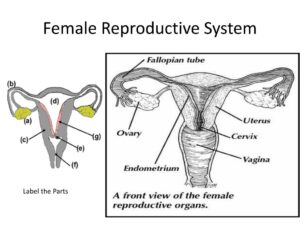
Take note, that the mammary glands are not part of the genital organs but an important gland for the female reproductive system.
The Female Reproductive Life Span
The life span of a female reproductive cycle is divided into three periods: the first, second and third.
The First period: This extends from birth to puberty, which occurs at the age of 12-15 years. During this period the primary and accessory sex organs do not function, as they remain quiescent.
The Second period: This extends from the onset of puberty to the onset of menopause. During this period, females have their first menstrual cycle known as menarche. As well as the permanent stoppage of their menstrual cycle, which occurs around 45- 50 years, also known as menopause.
The Third period: This period spans from after menopause till death. But it’s usually a period of the reproductive life span of women being ignored.
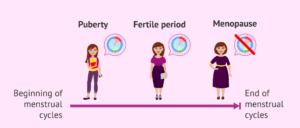
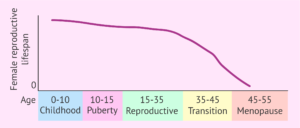
Reproductive Health Information for Women and Young people
Women and young people make up a significant part of the reproductive and global population. Hence, the right information concerning their reproductive health and wellbeing -i.e. the correct and right information to understand their body, sexuality, choices, reproductive rights and responsibilities, especially in association with their culture, religion, socioeconomic status and other determinants of health – must be made readily available and accessible to them.
Appropriate education on Sexuality is providing and making accessible the right information on maturation and development of the human body. This helps to take away the curiosity of children and adolescent about their growing and changing bodies. This also arms them with the right knowledge of puberty, sexual organs, pregnancy, fertilization and development of babies in the uterus.
For instance, when a matured male sperm and female egg comes together following intercourse, fertilization begins. Making the cells in the egg to begin division and travel through the fallopian tube to the uterus – where the baby is formed and nurtured till delivery. This journey of the egg to the uterus lasts between five to seven days.
After which the implanted egg in the uterus sends signals to the other organs and the pregnancy hormone – progesterone – are produced. This then leads to symptoms such as tenderness of breast, vomiting etc showing up in the female. And pregnancy can be confirmed by the presence of human chorionic gonadotropin (HCG) in the urine or blood. Once pregnancy is confirmed, antenatal care is advised to start.
However, this important population are usually unexposed to these much-needed information and mostly marginalised by society, leading to many of them making uninformed choices that causes reproductive health-related morbidity and mortality. This on the long run affects the productive contribution and potential actualisation of these population towards achieving the sustainable development goals in their locale and globally.

Some of the places to access this right information from in our modern times are from healthcare personnel, youth friendly healthcare facilities and centres in communities and school environment, reproductive health centered applications on devices, the media and internet (although this has to be guided or done with caution to avoid harmful and misleading information) etc.
Reproductive Health Commodities for Women and Young people
Reproductive health commodities are items needed and utilised for the care of our reproductive system and health. One of such are birthing commodities for pregnant women, which – when accessible – are essential for the safe and successful delivery of women. Other examples are menstrual hygiene commodities for young girls to safeguard their menstrual health and general wellbeing, and contraceptives for male and female to space childbirth and prevent unwanted pregnancies with all its associated morbidities and mortality.
Noticeably, the financial capability and socioeconomic status of women and young people play an important role in their ability to access, afford and purchase these crucial care commodities. Impressively, some non-governmental organizations provide aids by the distribution of these items to the women and young population.
Reproductive Health Services for Women and Young people
Reproductive health services are consultations, procedures, medications and many more provided to the general populace – particularly women and young people – for their wellbeing. These services cover different aspects of reproductive healthcare component, ranging from contraception, termination of pregnancy and post-abortal care, pre-natal, antenatal and postnatal care, treatment of Reproductive Tract Infections (RTIs), Cancers and other pathologies.
RTIs particularly rank as the second leading cause of disease-burden among young adult women in developing countries, surpassed only by maternity-related causes. And they can be categorised into sexually transmitted infections (STIs) and non-sexually transmitted infections. STIs, including chlamydia, gonorrhea, syphilis, and human papillomavirus (HPV), are predominantly transmitted through sexual contact and are prevalent globally. While Non-sexually transmitted infections, such as urinary tract infections (UTIs) and vaginal infections, can arise from a range of factors such as inadequate hygiene practices, weakened immune system, and specific medical conditions.
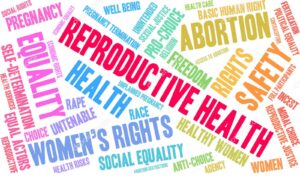
Prenatal care is advice or treatment given to women within the reproductive age, on the care of their bodies, based on the maturity of their reproductive system organs to keep them healthy and in preparation for pregnancy. Antenatal care also includes advice and treatment for women and their unborn child. This occurs during pregnancy for the safety and health of both mother and child. It also covers preparation for labour and in-labour care. While postnatal care is post-delivery care for mother and baby through the phases of being a neonate, infant, toddler until the child is fully grown.
Accessing prenatal, antenatal and postnatal care via primary healthcare centres or medical personnel can help to monitor and sustain a balanced and healthy living for both mother and child, during and after pregnancy. Some of the areas advised on include:
Good diet – Eating healthy food and staying away from junks is very important for the health of mother and development of child during and after pregnancy.
Prenatal supplements – prescribed vitamins by health professionals for nutritional value during pregnancy and Folic acid for preventing brain or spinal cord damage in the baby are as well important before, during and after pregnancy.
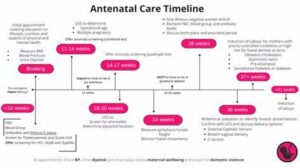
Weight gain and Exercise – During pregnancy it is important to stay active and maintain a healthy weight gain, to reduce the risk of non-communicable diseases related to pregnancy e.g. diabetes, hypertension. However, consistently going for antenatal appointments for checkups and speaking with a medical professional helps to know what types of exercises and activities are safe as pregnancy progresses.
Genetic counselling – This is also an important aspect to discuss with a medical professional about genetic compatibility of expecting parents, possibility of genetic related diseases and assessing the risk of having a baby with genetic disease(s). A common one is the Sickle Cell Disease.
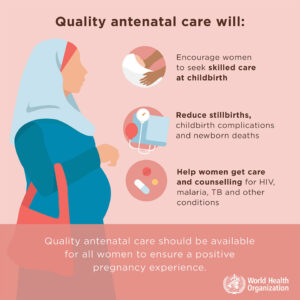
About Author:
Oyeniyi Blessing Oyeladun is an advocate for good health, who holds a first degree in Anatomy from Ladoke Akintola University of Technology, Ogbomoso, Nigeria. She is a great lover of God and enjoys writing, sewing, baking, volunteering, reading and networking with people towards improving medical innovation and intervention. She can be contacted via oyeladun270@gmail.com.

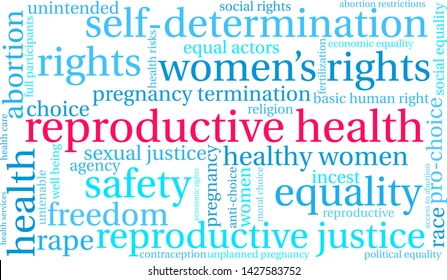
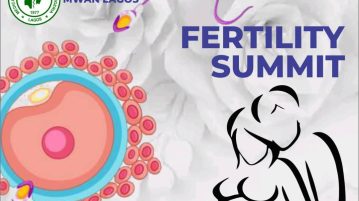


Discussion1 Comment
Pingback: ACSHR 2024: Ensuring Regulation, Costing Analysis and Accountability in the Reproductive Healthcare Industry across Africa